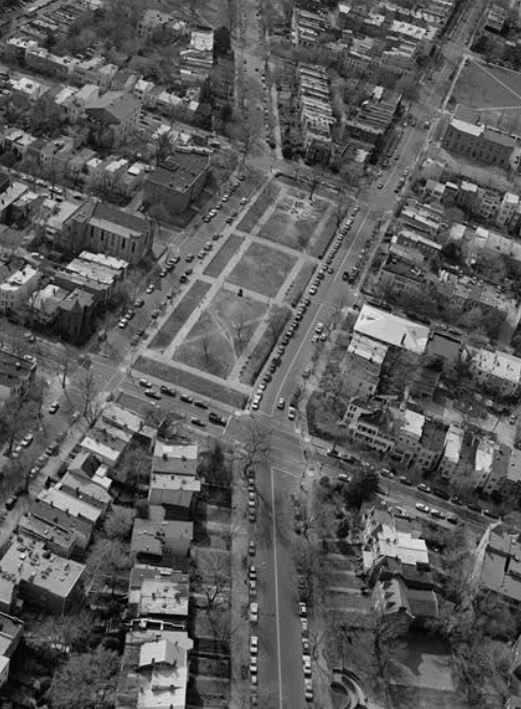
NPS Photo Bound by 4th & 6th Streets and at the intersection of E Street and South Carolina Avenue, Marion Park has become one of the most popular public parks located on Capitol Hill, with its interesting walkways and beautiful vegetation. It is the perfect place to take children for a stroll to the playground, to get exercise, or to enjoy a snack in the grass under any of the many ornamental trees. 
Library of Congress Though Washington was a segregated city, public parks were among the few public areas in the city that were not officially segregated, and Marion Park was among the few public spaces where black and white communities overlapped. Persistent lobbying by white residents resulted in physical changes to Marion Park, including the removal of the central fountain, which greatly altered the park’s spatial organization. These changes specifically responded to white residents’ desires to exclude black children from using the park and were designed to restrict and regulate how black residents could use the park. Thus, the alterations made to Marion Park are representative of race relations throughout the city in the era of Jim Crow, when black residents had little to no agency in the public realm. By 1962, the park had greatly deteriorated, which prompted the National Park Service to reevaluate the state of the park. In 1964, the park was redesigned based on contemporary principles of modern landscape design, and for the next several years, the park underwent additional improvements as part of First Lady Lady Bird Johnson’s Beautification program. |
Last updated: February 14, 2021
